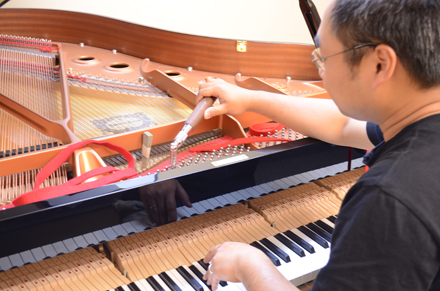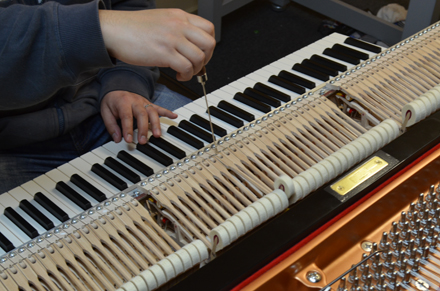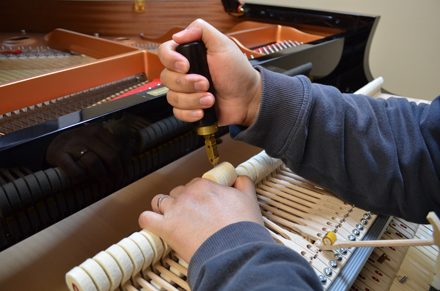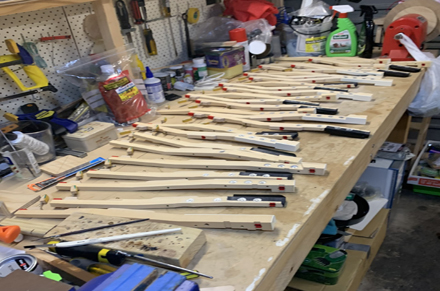
Piano tuning is the act of making adjustments to the tensions of the strings on an acoustic piano to properly align the intervals between their tones. Most of pianos are tuned to international standard concert pitch A440, which is used by all modern pianos and orchestras. The piano is usually tuned in equal temperament - taking about 2 hours for a normal tuning. More time may be required for a pitch raise.
If the piano has not been tuned for a long time or if the piano has been subject to extreme changes in weather conditions, the piano may be well below pitch. In that case, a "pitch raise" may be necessary before regular tuning. It is a kind of over pull pre-tuning, which will bring the pitch up further than it needs to be, in order to allow it to fall back within the correct range. This is normally completed in the same visit with the regular tuning.

Regulation is as important as tuning. Premium Piano Tuning also provides expert piano regulation and voicing to look after the touch and tone of your piano.
A piano is a complex mechanism. An upright piano has around 5,000 to 6,000 moving parts, whereas a grand piano has an average of 10,000. When you play each note, the motion of your finger is transferred from the key to the Action parts and finally to activate the hammer to hit the string, which is a complex mechanical movement. Each note requires adjustments of mechanical parts to critical tolerances to be able to respond to a pianist’s every command. The process of adjustments to achieve this to increase the dynamic range of performance is called Regulation.
All upright and grand pianos should be carried out periodic regulation to perform their best. Frequency of regulation mainly depends on amount of use, exposure to the climatic changes, and the quality, age and condition of instrument itself. Most manufacturers recommend regulation at least every 5 years. If the piano is heavily used, or if especially fine results are needed, it should be regulated every 3 to 5 years.

Voicing is the adjustment of the tone or quality of sound. Tone varies even among the pianos with the same make and model. You choose your piano because it sounded good to you. The tone should be even from 1st to 88th note. But a piano's tone changes with use. As the hammers wear or compact, the tone becomes harsh or dull. With time hammer felt may become flat or grooved. Hammer filling can be used to reshape the felt into a smaller striking point. If felt is too flat or grooved, replacement of the hammer is the last resort.

Some mechanical parts become loosen, worn out or broken because of climatic conditions, age, poor treatment and etc. Most minor problems can be fixed at customer’s place when the piano is tuned. There are some of the common repairs that your piano may require.

Keeping your piano clean and well-maintained is essential for preserving its beauty, functionality, and sound quality. Lubrication is sometimes necessary to ensure the piano’s moving parts work smoothly. This includes keyboard, action parts, and pedal mechanisms. Regular maintenance — including periodic cleaning and professional servicing — helps keep your piano in excellent condition for years to come.